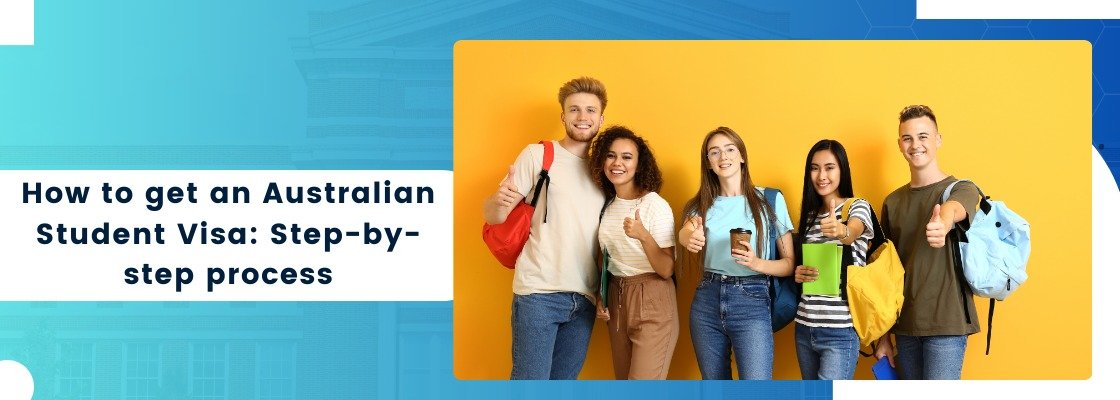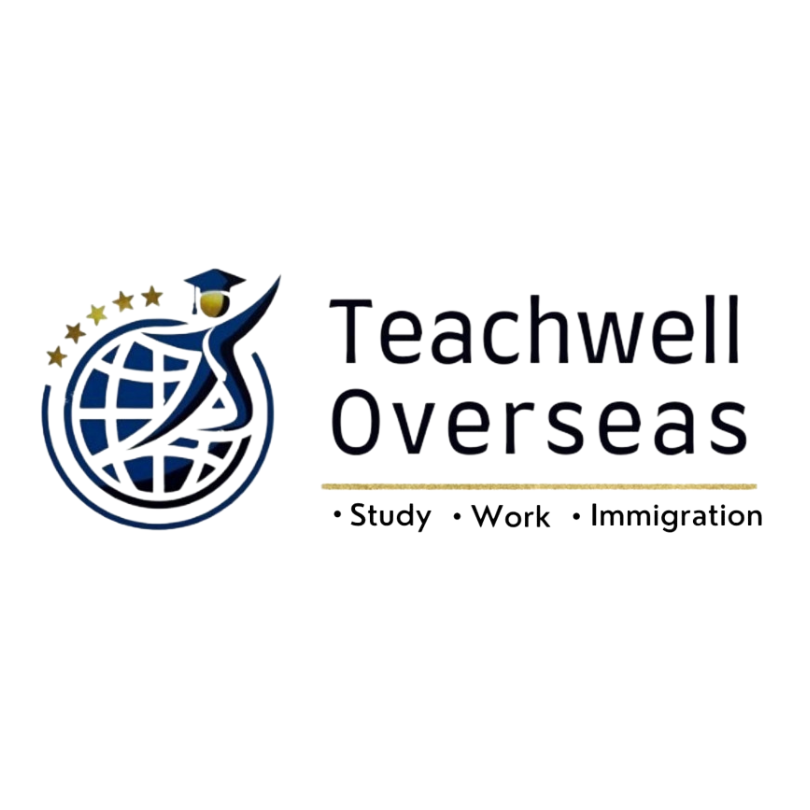
How to get an Australian Student Visa: Step-by-step process
International Students who want to study in Australian Universities must apply for a student VISA. This article will provide a detailed guide on how international students can submit their applications for a student visa to study in Australia. Australia is one of the top destinations for higher education, it offers a rich cultural experience, world-class universities, and diverse academic opportunities. However, before embarking on this educational journey, obtaining a student visa is essential, as it legally permits international students to live, study, and work in the country during their course of study.
The Australian student visa, specifically the Subclass 500, is more than just a legal requirement; it serves as a gateway to a multitude of academic and career opportunities. This visa not only grants students the right to pursue their chosen course but also allows them to gain valuable work experience through part-time employment. Additionally, the visa provides access to Australia’s healthcare system through Overseas Student Health Cover (OSHC), ensuring that students are protected during their stay. The ability to work while studying, combined with the high standard of education, makes the Australian student visa an invaluable asset for international students.

The process of obtaining an Australian student visa involves several crucial steps, from selecting an accredited course and institution to proving financial capacity and English proficiency. Each step in the visa application process is designed to ensure that students are well-prepared for their studies and capable of supporting themselves during their time in Australia. Successfully navigating this process is vital,, as it directly impacts students’ ability to commence their studies on time and with the necessary legal protections.
Understanding the Visa Application Process
Applying for an Australian student visa is a multi-step process that requires careful attention to detail and adherence to specific requirements. Below is a detailed look at the visa application process, including key timelines, deadlines, and common pitfalls to avoid.
- Letter of Offer: Once you have chosen your preferred course and university, review the entry requirements and prerequisites and apply before the deadline. After receiving the offer letter from the university, could you read it thoroughly? If any conditions or additional documentation are required, ensure to provide the same at the time of GSR.
- Confirmation of Enrollment (CoE): A Confirmation of Enrolment (CoE) is a document that will be issued by your education provider that verifies your enrolment in a specific course. The CoE will be sent to you after you have accepted you Letter of Offer and paid your deposit.
- Gather Required Documentation: To apply for an Australian student visa, you’ll need several essential documents. These include your Confirmation of Enrollment (CoE) from the institution, a valid passport, and proof of financial capacity to cover tuition and living expenses. You’ll also need English proficiency test results, proof of Overseas Student Health Cover (OSHC), a Genuine Student (GS) statement explaining your study intentions, and any required health and character documents. Ensuring all documents are accurate and complete is crucial for a smooth visa application process.
- Create an ImmiAccount and Submit Your Application: To apply for an Australian student visa, you must first create an ImmiAccount on the Australian Department of Home Affairs website. This account is where you will complete and submit your visa application online. After setting up your account, fill out the Subclass 500 Student Visa application form, ensuring all information is accurate. Upload all required documents, including your COE, passport, financial proof, and other necessary materials. Pay the visa application fee online through the portal. Once submitted, monitor your ImmiAccount regularly for updates or additional requests from the Department of Home Affairs.
- Await Visa Decision: After submitting your Australian student visa application, the next step is to wait for a decision from the Department of Home Affairs. Visa processing times can vary, so it’s important to monitor your ImmiAccount regularly for updates. During this period, you might be asked to provide additional information or documents, so be prepared to respond promptly.

Eligibility and Student Visa Requirements
Securing an Australian student visa involves meeting specific eligibility criteria and fulfilling various requirements designed to ensure that applicants are genuinely intending to study in Australia. Below is an overview of the general requirements, eligibility criteria based on different factors, and the importance of the Genuine Student (GS) requirement.
Overview of General Student Visa Requirements
To obtain an Australian student visa (Subclass 500), applicants must meet several standard requirements:
- Confirmation of Enrollment (CoE): A CoE from a CRICOS-registered institution is mandatory.
- English Proficiency: Applicants must prove their English language skills through accepted tests like IELTS, TOEFL, or PTE, unless exempted.
- Financial Capacity: Proof of sufficient funds to cover tuition, living expenses, and travel is required.
- Overseas Student Health Cover (OSHC): Health insurance coverage for the duration of your stay is compulsory.
- Genuine Student Requirement: Applicants must demonstrate a genuine intention to stay in Australia temporarily.
- Health and Character Requirements: Applicants may need to undergo health examinations and provide police clearance certificates.
Importance of Meeting the Genuine Student (GS) Requirement
The GS requirement is a critical component of the Australian student visa application process. It is designed to ensure that the applicant’s primary purpose for coming to Australia is to study and that they intend to return to their home country after completing their studies.
To meet the GS requirement, applicants must submit a written statement detailing:
- Study Intentions: Explain why you chose the specific course and institution and how it aligns with your future career goals.
- Ties to Home Country: Provide evidence of strong personal, professional, or financial ties to your home country that indicate your intention to return.
- Immigration History: Include details of any previous visas, especially if you have studied or traveled to Australia before.
Meeting the GS requirement is crucial, as failing to demonstrate a genuine intention to study can result in visa refusal. Therefore, it’s important to carefully craft your GS statement and provide supporting evidence to strengthen your application.
Understanding these eligibility criteria and requirements is essential for a successful Australian student visa application, ensuring that you can legally pursue your educational goals in Australia.
Document Checklist for Application
When applying for an Australian student visa (Subclass 500), having a comprehensive and well-organized set of documents is crucial. Below is a detailed checklist of the documents you will need, including specifics on academic transcripts, English proficiency test results, and financial evidence. Additionally, tips for gathering and organizing these documents are provided to help streamline your application process.
Comprehensive Document Checklist
- Valid Passport: Ensure your passport is valid for the duration of your stay in Australia.
- Academic Transcripts: Certified copies of your previous academic records, including all transcripts, degrees, and backlog certificates (if any).
- English Proficiency Test Results: Official scores from tests such as IELTS, TOEFL, PTE, or others accepted by the institution and visa authorities.
- Confirmation of Enrollment (CoE): Issued by your CRICOS-registered institution after you accept their offer.
- Visa Application Form (Subclass 500): The duly filled-out application form should be submitted through your Immi Account.
- Genuine Student (GS) requirement: A written statement explaining your reasons for studying in Australia and your intention to return home after your studies.
- Signed letter of acceptance: Upon receiving the offer letter from the university, the student needs to sign and mention the date on it and send it back to the university while submitting GS documents.
- Health Insurance: Overseas Student Health Cover (OSHC): Proof of health insurance coverage for the duration of your stay in Australia.
- Medical Certificate: A medical certificate or health assessment report from the panel doctor is required. This certificate should be submitted as part of your visa application.
Visa Fees and Associated Costs
Applying for an Australian student visa involves not only the visa application fee but also several other associated costs that applicants should consider. Below is a breakdown of these fees and expenses to help you budget effectively for your study abroad journey.
- Student Visa Application Fee: The Student Visa Application Fee for the Australian Subclass 500 visa is approximately AUD 1600. This fee covers the processing of your application and is required for submission through the ImmiAccount portal. If you’re including family members, such as a spouse or children, additional charges will apply—around AUD 485 for a spouse and AUD 160 for a dependent child. This fee is non-refundable, so it’s essential to ensure all your documentation is complete and accurate before submission.
- English Proficiency Test Fees: If you need to take an English proficiency test, such as IELTS, TOEFL, or PTE, the cost typically ranges between AUD 300 to AUD 400 per test. Prices can vary by location and test provider.
- Health Examination Fees: Depending on your country of origin and personal circumstances, you may be required to undergo a health examination. The cost for medical exams typically ranges from AUD 200 to AUD 400, depending on the tests required and the country in which they are conducted.
- Travel Expenses: Don’t forget to budget for your travel to Australia. Flight costs will vary depending on your location, the airline, and the time of year, with one-way tickets typically ranging from AUD 1,000 to AUD 2,500.
Health Insurance for International Students
OSHC is mandatory for all international students in Australia, and it must cover the entire duration of your student visa. The Australian government requires this insurance to ensure that students can access essential healthcare services, including hospital treatment, doctor consultations, and some prescription medicines, without facing financial hardship. Without OSHC, medical expenses in Australia can be very high, so having this coverage provides peace of mind and financial protection in case of illness or injury.
Tracking and Managing Visa Approval
Once you have submitted your Australian student visa application, it’s important to stay informed about its status and manage any further requirements. Here are the steps to track and manage your visa approval effectively:
- Monitor Your ImmiAccount: Log in to your ImmiAccount frequently to check for updates on the status of your visa application. The Department of Home Affairs will post notifications and updates here. You can view the current status of your application, including whether it is being processed, if additional information is required, or if a decision has been made.
- Check Your Email: The Department of Home Affairs will send notifications and updates regarding your visa application to the email address you provided. Keep an eye on your inbox for any correspondence. If you receive a request for additional information or documents, respond promptly to avoid delays in processing your application.
- Contact the Department of Home Affairs: If you have concerns or haven’t received updates within the expected timeframe, contact the Department of Home Affairs for information on your visa status. When contacting them, be ready to provide your application reference number and personal details to facilitate their assistance.

Conclusion
Navigating the Australian student visa application process involves several crucial steps, from selecting the right course and securing a Confirmation of Enrollment (CoE) to gathering necessary documentation and creating an ImmiAccount to submit your application. Once submitted, it’s essential to monitor your application status through your ImmiAccount and respond promptly to any requests for additional information. Preparing for a visa interview, if required, and effectively tracking and managing your visa approval will ensure a smooth transition to studying in Australia. Remember to leverage institutional support services, online resources, and community networks to assist you throughout the process. Utilizing these resources will help you address any challenges and focus on your academic journey with confidence.
Frequently Asked Questions (FAQ)
Q-1: What is the Australian student visa (Subclass 500)?
The Australian student visa (Subclass 500) allows international students to live and study in Australia for the duration of their course. It permits full-time study at a CRICOS-registered institution and includes conditions on health insurance and financial capacity.
Q-2: How long does it take to process a student visa application?
Processing times can vary based on several factors, including the completeness of your application and the volume of applications being processed. Generally, student visa applications take between 4 to 6 weeks. It’s advisable to apply well in advance of your intended start date to allow for any potential delays.
Q-3: What if I need to extend my student visa?
If you need to extend your student visa, apply for a new visa before your current one expires. Ensure you have valid reasons for extending and provide updated documents, including a new CoE if your course end date changes.
Q-4: Can I work while on a student visa?
Yes, you can work up to 48 hours per fortnight during the academic term and unlimited hours during scheduled breaks. Ensure that you comply with the work conditions specified in your visa grant.
